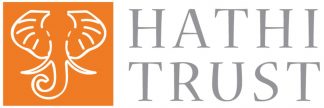By Jon Jeffryes
 HathiTrust Digital Library contains vast numbers of books scanned from the collections of a group of international libraries — including the University of Minnesota Libraries. Millions of those books are open for anybody to use in their research and reading.
HathiTrust Digital Library contains vast numbers of books scanned from the collections of a group of international libraries — including the University of Minnesota Libraries. Millions of those books are open for anybody to use in their research and reading.
But determining which are in the public domain and which have copyright protections can be tricky. The Libraries is working with HathiTrust to make the “hidden” public domain titles available to all.
Selecting eligible books
Books in the public domain — those that no longer fall under copyright protection — can be viewed by any researcher anywhere with an internet connection. Some of these are well known: Little Women, The Autobiography of Benjamin Franklin, and Moby Dick were all published in America by American authors before 1923 so their original editions are eligible to be scanned and shared.
Some books published after 1923 have a lapsed copyright and could be included in HathiTrust’s collection of publicly available books, while others had their copyright renewed and are still under its protections.
Determining which titles fall into which category requires title-by-title investigation. A group of Libraries staff are working with HathiTrust to investigate titles with the goal of expanding the reach of public domain and enriching the selection of publicly available materials on the internet.
HathiTrust’s copyright review project
HathiTrust started examining books that fall into that copyright gray area back in 2008. Its team of reviewers come from 22 libraries. Reviewers receive titles randomly and they follow a rigorous sequence of questions to determine if a book is still in copyright. Titles found to be public domain by two separate reviewers are then moved on to an “expert review” for final approval.
“There’s a balance where we want to respect and protect the author’s rights and we also want to make sure that the public can access as much of their cultural heritage as possible,” explains Laureen Boutang, project coordinator for the University of Minnesota.
The reviewers describe their work as an engaging but intricate process.
“The work is interesting as you see so many different kinds of titles and subjects,” says Marlys McGuire, Design, Housing, and Apparel & Government Documents Librarian. “It is also very challenging as there are many factors that enter into one’s decision.”
The work requires an inquisitive mind, creativity, and tenacity. Reviewers must investigate multiple aspects of a book’s publication, the author’s life, and copyright databases to get the details needed to make a determination of copyright status.
“You’re trying to figure it out and you have a little bit of information but you don’t have the whole picture,” says Melissa Aho, Evening & Circulation Supervisor in the Bio-Medical Library. “It’s kind of like a little mystery.”
An impact beyond campus
This project leverages the knowledge and expertise of the University Libraries staff to benefit researchers both on campus and beyond. There are currently four staff members reviewing titles weekly for the project. Along with Aho and McGuire, Rory Segety and Sandra Cressman also serve as reviewers.
“The core of our participation is the staff members doing the work,” says Boutang, “they’re extremely skilled, they’re very smart, and they’re very hardworking.”
The review process takes reviewers down interesting and unexpected research avenues. Aho discusses reviewing a book by Josef Korbel, the father of former Secretary of State, Madeline Albright, seeing early illustrations by Dr. Seuss, and looking into the biography of Eugene Fodor of travel guide fame. Reviewers have also seen contemporary accounts of the Titanic tragedy, books by President Herbert Hoover, and the works of early self-help guru, Napoleon Hill.
The University of Minnesota Libraries began working on the project in 2010. Since then staff have reviewed nearly 116,000 titles. Their work has resulted in the “opening” of more than 60,000 titles.
“It’s pretty amazing all of the items that we’re putting out there for people to use,” says Aho, “items that have been scanned and digitized and have been hidden from the public or the population that nobody would have seen before and now people get to see them and read them.”




